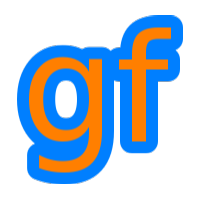35 #ifndef DOXYGEN_SHOULD_SKIP_THIS 217 void update(
const uint8_t *data);
236 void update(
const uint8_t *data,
const RectU& rect);
287 bool create(Vector2u size,
const uint8_t *data);
357 bool create(Vector2u size);
492 bool create(Vector2u size);
495 #ifndef DOXYGEN_SHOULD_SKIP_THIS static void bind(const BareTexture *texture)
Bind a texture for rendering.
void update(const Image &image)
Update the texture from an image.
RectF computeTextureCoords(const RectU &rect) const
Compute normalized texture coordinates.
BareTexture & operator=(const BareTexture &)=delete
Deleted copy assignment.
bool create(Vector2u size)
Create the texture.
void update(const uint8_t *data, const RectU &rect)
Update a part of the texture from an array of pixels.
Format
Format of the texture.
Definition: Texture.h:74
bool loadFromFile(const Path &filename)
Load the texture from a file on disk.
bool create(Vector2u size)
Create the texture.
bool isRepeated() const noexcept
Check if the texture is repeated or not.
Definition: Texture.h:197
bool create(Vector2u size, const uint8_t *data)
Create the texture.
~BareTexture()
Destructor.
BareTexture & operator=(BareTexture &&other)
Move assignment.
Image copyToImage() const
Copy the texture pixels to an image.
bool loadFromImage(const Image &image)
Load the texture from an image.
A texture for colored images.
Definition: Texture.h:339
bool isSmooth() const noexcept
Check if the smooth filter is enabled or not.
Definition: Texture.h:165
BareTexture(BareTexture &&other)
Move constructor.
BareTexture(const BareTexture &)=delete
Deleted copy constructor.
void setSmooth(bool smooth=true)
Enable or disable the smooth filter.
Class for loading, manipulating and saving images.
Definition: Image.h:92
The namespace for gf classes.
Definition: Action.h:34
An image that lives in the graphic memory that can be used for drawing.
Definition: Texture.h:67
bool loadFromMemory(const uint8_t *data, std::size_t length)
Load the texture from a file in memory.
AlphaTexture()
Constructor.
unsigned getName() const
Get the internal representation of the texture.
Definition: Texture.h:129
BareTexture(Format format)
Constructor.
bool loadFromStream(InputStream &stream)
Load the texture from a custom stream.
A texture with a single alpha channel.
Definition: Texture.h:474
#define GF_API
Definition: Portability.h:35
void update(const uint8_t *data)
Update the whole texture from an array of pixels.
Format getFormat() const
Get the format of the texture.
Definition: Texture.h:118
Vector2u getSize() const
Return the size of the texture.
Definition: Texture.h:138
bool generateMipmap()
Generate a mipmap using the current texture data.
void setRepeated(bool repeated=true)
Enable or disable repeating.


 1.8.13
1.8.13